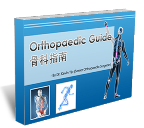- Ankle Pain
- Knee Pain
- Elbow Pain
- Neck Pain
- Heel Pain
- Lower Back Pain
- Fracture Pain
- Shoulder Pain
- Shoulder Dislocation
- Shoulder Instability

Join Our Mailing List to get Orthopaedic Guide eBook!
Call +65 64712698
for appointment

Specialist In Orthopaedic Surgery & MBBS(UK), FRCS(EDIN), FAM(SING), FHKCOS(ORTHO)
Shoulder Dislocation
Shoulder Dislocation: Causes and Risks
The shoulder is referred to as the joint between the arm and torso, and said to be the most mobile among all joints in the body. When one refers to joints, it contains a tendon that binds several bones together in order to hinge a movement. If shoulder is wrenched upward and downward, this may dislocate the bones, which is both painful and incapacitating. Because of the anatomy of the shoulder joint, most of the dislocations happen at its lower front area.
Symptoms of Shoulder Dislocation
The main symptom of shoulder dislocation is the severe pain at the shoulder joint. When this is experienced, there would be immobilization and the patient will have a great difficulty moving the arm even a little bit. Shoulder dislocations happen from a severe trauma, and this can be suspected if when touched, an unbearable pain is felt. , In addition, a mushy part will be felt as if a bone is gone, which is usually the humeral head or top of the arm bone.
Possible Causes of Shoulder Dislocation
The shoulders are the most common joint in the body to dislocate. The arm is constantly moved away from the body (abducted) and externally rotated (turning the forearm, palm side up). The joint gives way, and the humeral head, or the ball of the joint, is ripped out of the socket. The structures that hold the shoulder together are usually torned, including the joint capsule, cartilage, and the ligaments of the rotator cuff. This happens with severe trauma from vehicular accident, sport injuries, fall and other physical activities that may require shoulder movement.
Am I at risk?
People who are at risk with shoulder dislocation are those who do physical activities requiring shoulder movement. Dancing, gymnastics, and the likes are at high risk with this injury. Like most common injuries, when left untreated, this may cause a serious problem. Thus, it is always best to consult a professional right away.
If the person happens to experience the abovementioned symptoms, he is advised to consult an orthopaedic doctor and/or a licensed physical therapist immediately.
For more information or to book and appointment with the Singapore Orthopaedic Clinic, you can call (+65) 6471 2698. Our hotline is open 24 hours a day. You may also send us an enquiry for appointment.
